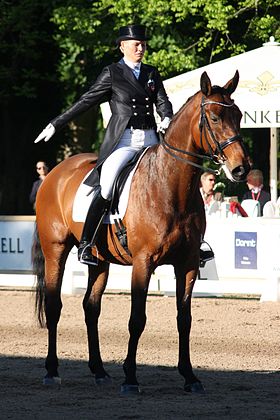The warm-blooded Danish horse
Over the centuries, Danish mares have been bred to Iberian (Andalusian), Neapolitan, Friesian and then Thoroughbred, Trakehner, Anglo-Norman or French Saddle, Wielkopolskis and Malopolskis stallions. Its Stud Book was opened in 1960. Approval tests for breeding stock are highly demanding, and despite the breed’s reputation, there is a low volume of warm-blooded Danes. A relatively young breed (its Studbook was created less than 60 years ago), it is still quite rare in some of the world’s leading equestrian countries, such as the USA. However, an association was created over ten years ago to promote the breed in the New World. This horse is often compared with the Swedish Saddle.

Caractère et aptitudes du cheval
Fiery but balanced, docile, this horse is energetic and robust.
Utilisations du cheval
A high-performance competition horse (cross-country, dressage), it is also appreciated for leisure riding. He was born of a desire to create a horse fit for top-level competition, and made his debut in dressage, before moving on to other equestrian sports such as show jumping and eventing. The horse has often been crossed with other breeds, due to the reputation of its characteristics and performance, but also because of a very tolerant Studbook in this respect: according to a study carried out several years ago, around 75% of Warm-blooded Danes come from breeding stock from other studbooks. Numerous breeding plans have been put in place to promote its competitiveness.
Morphologie du cheval
Head with straight profile. Fine nose. Wide nostrils. Fairly long ears. Elegant neck. Prominent withers. Muscular, sloping shoulders. Powerful back. Powerful hindquarters. Strong, powerful limbs. Short cannons, broad hocks. Excellent feet. Coats: all colors permitted. Height: 1.63 to 1.68 m.
Find out more: The warm-blooded Danish horse


